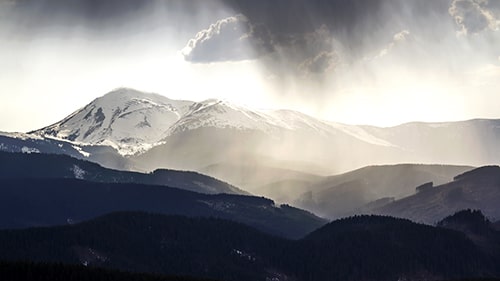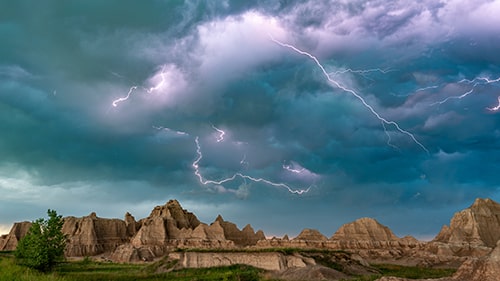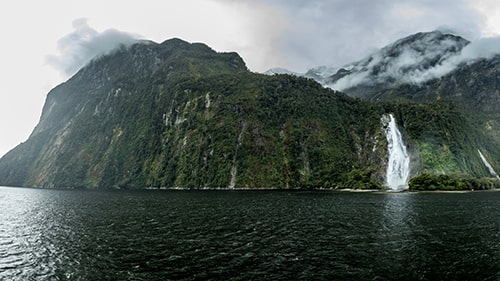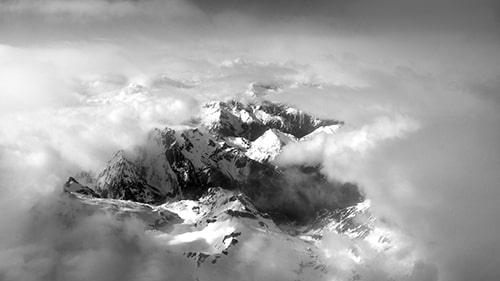three marks of existence

in this program
Buddhism describes all of reality or existence as having three marks, namely impermanence, suffering, and no-self. some teachers, including Thich Nhat Hahn, add a fourth mark, namely peace. let’s look at each of these in turn, and then focus on five practices for working with impermanence and death.

what is born will die,
what has been gathered will be dispersed,
what has been accumulated will be exhausted,
what has been built up will collapse.
and what has been high will be brought low.
Buddha

impermanence

all conditioned things are impermanent — when one sees this with wisdom, one turns away from suffering.

Buddha

the truth of impermanence is the foundation of Buddhism. all things are made of compounds or aggregates, and all things fall apart. not one aspect of our life has permanence. our body, our belongings, our thoughts and feelings, and our sensations are all impermanent. everything changes, decays, disintegrates, and dies. ego’s main priority is the denial of this truth, and we barter through investing in insurances, misusing our power, and trying to ignore death. we cannot accept the truth of impermanence, and so we suffer. what we call loss is the suffering of impermanence, and, paradoxically, when we accept this truth, we find perfection in the imperfection. we can find this imperfect perfection in our difficulties and suffering.
the Buddhist teachings list five conditions over which we have no control:
- growing old
- falling ill
- death and destruction
- the decay of perishable things
- passing away.
our lack of control over these phenomena can lead to intense anxiety and inner turmoil. however, we can also discover that the fear that impermanence awakens in us is our greatest friend, because it drives us to ask: “if everything dies and changes, then what is really true? what is really worthy? is there something behind the appearances? is there something that we can, in fact, depend on, that survives what we call death?”
if we allow these questions to occupy us, urgently, and we reflect on them, we slowly find ourselves making a profound shift in the way that we view everything. we come to uncover in ourselves “something” that lies behind all the changes and death in the world. as this happens, we catch repeated and growing glimpses of the vast implications behind the truth of impermanence. we come to uncover a depth of peace, joy, and confidence in ourselves that fills us with wonder, and that gradually engenders in us a certainty that there is “something” in us that cannot be destroyed or altered, and that cannot die.

this existence of ours is as transient as autumn clouds. to watch the birth and death of beings is like looking at the movements of a dance. a lifetime is like a flash of lightning in the sky, rushing by, like a torrent down a steep mountain.

Buddha

when we try to resist this relentless movement, we experience pain and suffering. but in the moments where we accept our life unconditionally, we experience joy and happiness. our darkest hour cannot extinguish the radiance of our Being. and yet, we constantly deny our Being, attempting to adjust reality to our tastes through striving, longing, and expectation. our repeated failures in trying to make reality into what we want it to be extends our suffering.
nowhere is impermanence more visible than in Buddhism’s eight worldly dharmas. dharma, in this context, means teaching, and this teaching is about all the things we seek and avoid. throughout our life, we strive to seek pleasure and avoid pain. we seek praise and avoid blame. we seek fame and avoid disgrace. and finally, we seek gain, and avoid loss.
in reality, there is no difference between these opposites. what one sees as gain, another sees as loss. it is only when we are free from seeking and avoiding that we are truly non-attached. in Buddhist terminology, reality is described as being “one taste,” a term that refers directly to the non-duality of opposites. though pleasure and pain are different experiences, they are both experiences, and, in this way, they are the same. what we perceive as opposites are in reality just two sides of the same coin. we can become directly aware of our sensitivity and our capacity for being-knowing reality through directly engaging with the nonduality of opposites. this practice may be easy to understand, but it is not so easy to realize in our experience.
to find meaning and beauty in impermanence and suffering, we need to practice seeing and embodying the oneness of pleasure and difficulty. we can then discover how good and bad are alike, and how we can accept our difficulty as pleasure. to take impermanence truly to heart is to be slowly freed from the idea of grasping, from our flawed and destructive view of permanence, and from the false passion for security on which we have built our lives. gradually, it dawns on us that all the heartache we have been through from grasping at the ungraspable was, in the deepest sense, unnecessary.

it may take a long time for the extent of our foolishness to sink in, but the more we reflect, the more we develop the view of letting go. it is then that a complete shift takes place in our way of looking at everything.

Sogyal Rinpoche

when we acknowledge the falling apart in our lives, we can overcome ego, which sees change as threatening. we can begin to live with the understanding that everything is constantly changing, and therefore change is not “wrong”. in Buddhism, attachment is seen to be the root of suffering. attachment describes anything we want to hold onto, from the current weather conditions to our car. from the perspective of attachment, “i have a car”, becomes “the car has me” because we resist letting go, and fear the loss of the car. this fear of and resistance to change is the basis of our suffering.

change is never painful, only resistance to change is painful.

Buddha

change, or impermanence, is simply an aspect of a reality that is neither personal nor impersonal — it simply is. a death may be an end for one, and for another it may be a beginning. much of the time, things do not turn out the way we want them to, and if we cannot be more flexible, our suffering continues. by accepting, acknowledging, and allowing, we begin to set ourselves free. we begin to build a relationship with the difficulty, and we can even often overcome it.
suffering

every experience, no matter how bad it seems, holds within it a blessing of some kind. the goal is to find it.

Buddha

we typically take our suffering very personally, acting as if we have been singled out for this suffering. in reality, everyone and everything suffers. every experience is marked by some quality of suffering, or unsatisfactoriness. this suffering may range from pain, through irritation, into simple unease, restlessness, and dissatisfaction. as long as we try to maintain a sense of solid self, we will experience stress and fear, because there is always something this “self” seeks or tries to avoid. at this very moment, billions of people are suffering, and billions are experiencing joy. in the next moment, it is already changing, with each side veering to the other.
according to Buddhism, suffering stems from three sources. the first is the suffering of existence, namely birth, sickness, old age, and death. we have no choice in these realities, but we do have a wonderful opportunity. we can become aware of how deeply suffering wakes us up to seeing our world, empathizing with others, and connecting with ourselves. the second source of suffering is impermanence: the fact that everything we want and enjoy will not last, and much of what we don’t want will come our way. the third source is the most optional aspect of suffering. it is the suffering that stems from clinging to a “self”; wanting things to be according to our tastes and ways of understanding reality. this suffering manifests itself in our restlessness, unsatisfactoriness, judgment, and reactions.
when we can see our suffering as the presence of our humanness and sensitivity, when we can allow space for the suffering and let it process, and when we can see how suffering connects us to everyone and everything, then suffering takes on a very different meaning. it is not a wrong, or a brokenness. it is simply the rawness and directness of experience. experience seeks to know everything in us, and to live through all the waxing and waning of our lives.

suffering is a constant reminder of the pain of being human, but also of one of the most elemental ways that we all connect with each other, because we all suffer terribly at some point. suffering is not just negative, it is a bond through which we all touch each other. suffering, truly, is the first grace.

Ken Wilber

no-self

since everything is but an apparition, perfect in being what it is, having nothing to do with good or bad, acceptance or rejection, you might as well burst out laughing!

Longchenpa

when we understand impermanence, we also understand no-self, or selflessness. impermanence means that we will die; the body will decompose and fall apart. time will eradicate every memory of who we were. when we put this into the perspective of the eons of the universe, our very existence becomes insignificant and impersonal. existence is continually changing, and there is no abiding self, only experience. there is nothing, literally no thing, at the core of our being. when we look for an ongoing or permanent self, we find only multiple causes and conditions, thought and feeling processes, and perceptions and sensations. whereas impermanence describes how things are, no-self describes how they’re not.

mind is not simply nothing. it is empty, no thing, and clarity at the same time. nothing impedes the arising of experience. the three aspects of mind — emptiness, clarity, and unimpeded experience — are the real mystery of being. in the open space of awareness, experience arises and subsides, but what arises is not separate from awareness. presence is resting in awareness, knowing that mind nature is empty, clear, and unimpeded, and knowing no separation from what we experience.

Ken McCleod

peace
when we realize the truth of impermanence, suffering, and no-self, there is immense peace. there is nothing to strive for, become, or attain. there is just what is, and what is is already at peace with itself. we embody the wisdom of letting go. we also realize that we are the peace of Being, and that this peace is always already present. we did not to make or create this peace, we simply had to dig it out from under all the thoughts, interpretations, reactions, and other mental processes. the peace attained through realizing the marks of existence rests on seeing reality as it is from the viewpoint of non-dual truth. as always, it may be easy to understand this intellectually, but it is only through experiencing this truth that it becomes realized or embodied. the many faces of this peace are explored more deeply in our beyond personality section.

the peace that we are looking for is not peace that crumbles as soon as there is difficulty or chaos. whether we’re seeking inner peace or global peace or a combination of the two, the way to experience it is to build on the foundation of unconditional openness to all that arises. peace isn’t an experience free of challenges, free of rough and smooth — it’s an experience that’s expansive enough to include all that arises without feeling threatened.

Pema Chödrön

death and impermanence practices

meditating on death and impermanence frees us from the conditioning of culture, society and upbringing and brings us closer to life, closer to the mystery of being.

Ken McCleod

the Buddha regarded the meditations on impermanence and death to be the most profound practices. when undertaken with presence and diligence, these practices have a profound effect on our view of world and self. there are many practices on impermanence and death in the different Buddhist schools. the following practices are from Wake Up to Your Life, by Ken McCleod.
if we are willing to reflect on death, we will be confronted with the question: “what is it that i am now experiencing, and that can end at any moment?” the conventional view is that death is the opposite of life, but the deeper truth is that death, like birth, is part of life. what is certain is that our life will end. if we ignore this, we cannot really know what life is. if we are deeply aware of death, our attention becomes sharper in terms of the actual experience of life. we can feel its preciousness.
unlike basic meditation, where we allow the mind to clear its contents and bring about direct awareness, meditating on death and impermanence uses reflection and cultivation. we all know that we will die, and we all know that things are impermanent. these practices allow us to get into the experience of these truths. using the basic instructions, we can allow ourselves to reflect on each point, and to feel the experience of it in the body.
initially, mind will throw up all kinds of related ideas and concepts, striving for intellectual understanding. as this happens, we simply return to the basic instruction and bring ourselves back to the reflection. or we may fall into a dull stupor or fall asleep. these reactive mechanisms keep us distracted from the reflection. to counteract our defenses and stay motivated, we can remind ourselves that we want to validate the material in our own experience. as we repeatedly reflect on one point, we may feel a shift in perception. there is a sudden decrease in distraction, and the material begins to have an emotional impact. the reflection begins to penetrate our ignorance. we see-feel life as it is.
cultivation follows reflection. once we’ve accepted and felt the validity of the basic point, we hold the theme or image in our attention and let it soak into us. we let our experience inform us about change and death.

cultivation is the stage at which emotional understanding really develops and where your experience and view of life change. for instance, when you truly take to heart that you are going to die, you naturally focus energy and attention on the aspects of life in which you feel most alive and present.

Ken McCleod

when engaging these practices McCleod suggests that we allow for some time to settle the mind — about fifteen to twenty minutes— and then spend about thirty minutes on the reflection and cultivation practice. finally, we can take another ten to fifteen minutes for the practice and its insights to settle in our understanding.
the two main reactions that tend to arise when working with these practices over a period of time are dullness and resistance. our mind becomes dull and muddy, or our thoughts are flooded with reasons why these are not good practices or why they are not worth doing. both these reactions are indications that we are still defending against the most naked experience of death and impermanence. we can learn to work with these defenses, softening our agitated mind, our restless body, and our reactive feelings. relaxing with or towards the resistance brings energy and curiosity, thus allowing awareness to penetrate more deeply into our experience.
when we work with these practices, fear becomes a real entity in our awareness. not only are we fearful to commit to the practice and feel our way into the instructions, but we may also have the sense that death is following us. these are all good signs, as uncomfortable as they may be. they are just the gradual breaking down of our conventional view, as we bring attention into our everyday experiences. as uncomfortable as they may be, they are also liberating, because they allow us to feel more alive than before. when we experience discomfort, fear, or resistance, we can simply rest with inclusive attention, resting in the breath and allowing physical sensations of tension, agitation, and fear. as our skill increases, we still feel the fear, but without dropping into reaction. we learn to stand in naked experience.

all men should try to learn before they die what they are running from, and to, and why.

James Thurber

1. everything changes — meditation
our purpose here is to know-feel that everything we experience is impermanent.
key phrase: consider how everything changes; nothing stays the same.
change in the world
- here our reflection can be on changes in galaxies, stars, and planets
- changes in oceans, continents, mountains, lakes, and rivers
- changes in living plants: trees, grasses, forests, prairies
- changes in living animals: birds, reptiles, fish, and insects
- changes in human society, countries, nations, and governments
- changes in clothes, fashion, art
- changes in philosophies, theories
- changes in weather, climate, seasons
- moment-to-moment structural changes in the world.
change in the body
- changes in hair, skin, nails
- internal changes to muscles, bones, blood, heart, lungs and other organs
- changes in the abilities to see, hear, touch, smell, think, remember
- changes in appetite, food, sex, sleep, exercise
- changes in weight, height, and shape as we mature and age
- cellular and metabolic changes.
change in personality and belief systems
- changes in dominant personality traits
- changes in likes and dislikes
- changes in ideas and beliefs about who we are
- changes in beliefs and ideas about our world
- changes in who we are in relationship
- changes in how we see and experience reality
- changes in how we think about and interpret experience.
McCleod suggests that we spend three to four weeks of practice on each of the three components.
change in the world
most of us are aware of change, but in an abstract way. we know about it, and we resist it. we know that galaxies change all the time, but what does this mean for us? when we get a bit older there is the direct experience of having seen much change over time. again, what does this mean when we bring it closer? how do we respond to changes like the weather, our pets, governing parties, and loss? we know that the continents drift and that mountains are still growing due to tectonic forces. what does it mean in terms of active volcanoes, earthquakes, and weather phenomena? can we touch the reality of our home and belongings being destroyed in a tsunami?
notice the changes you constantly experience in perception and sensation. changes in light, sound, odors, and textures. imagine the constant change of waves breaking onto a shore, and how color and brightness change throughout the day. listen to the changing play of sound, people talking, traffic, music. reflect on the cycle of the seasons, and of day and night. reflect on the constant change happening in our political and governmental systems. reflect on all the change happening in the hustle and bustle of our everyday life: moving, working, eating, sleeping.
when we work with these practices in an ongoing way, the sense of constant change sinks in deeper and deeper. this can trigger strong emotional reactions. whenever thought or feeling distract us, we can simply return to rest in the breath, allowing the reaction to simply be part of the experience, another object that we are curious about. even if the feeling remains, we don’t need to identify with it. when the reaction subsides, return to the contemplation of impermanence.

periods of formal practice are often filled with distractions, uncomfortable feelings, and other challenges. when you go about your day, however, you feel lighter, clearer, and more appreciative of each moment of experience. these are all the signs that a real understanding and acceptance of change has begun to form.

Ken McCleod

change in the body
we can begin by reflecting on how our body has changed during its life. how we learned to walk, and then to talk. how we experienced growing pains and childhood illnesses. reflect on the changes that the body underwent during adolescence. and if you’re in middle age, how the skin has roughened and thinned. think about the tasks you could do easily when you were younger, but now are too exhausting. no matter what cure we come up with, the body grows old. from moment-to-moment the body changes, right down to its cellular processes.
change in personality and belief systems
picture yourself at the age of five. recall what you liked and disliked, how you felt in relation to those closest to you, how you behaved and saw the world, and what you believed. now repeat at five year intervals: ten years old, fifteen years old, etc. what has changed? and what has remained the same?

by reflecting on how you change as you go through life, you will see how your life is shaped, if not determined, by deep emotional patterns that operate outside awareness.

Ken McCleod

as the realization that change is part of everything we experience begins to deepen, we will recognize how our life is driven by deep underlying emotional forces, operating unconsciously. our understanding of ourselves increases, and through this maturing, we gain a new perspective of ourselves and our world.
the end of accumulation is dispersion.
the end of building is ruin.
the end of meeting is parting.
the end of birth is death.
(the Four Ends, Buddhist teaching)
2. death is inevitable — meditation
the purpose of this meditation is to bring the reality of our own death into awareness.
key phrase: reflect on the many who have died.
human history
- reflect on the demise of our evolutionary ancestors and early hominids
- the rise and fall of great civilizations, Chinese, Greek, Roman, European, Aztec, Inca, etc.
- the changes in world population over the last few hundred years
- reflect on the deaths we’ve witnessed through wars, genocides, and homicides.
people with exceptional abilities
- reflect on the death of famous athletes
- rulers and politicians
- military leaders
- scholars, academics, researchers
- artists
- sages, saints and religious leaders.
your family and you
- reflect on the life and death of your ancestors
- parents and relatives
- people you love
- you.
McCleod suggests that we practice with each component of the above for about two weeks. we may understand the instructions, but remember that we want to allow the emotional responses to the practice to ripen.
human history
picture the early history of mankind, and the relentless presence of death. consider vast civilizations, with their immense advances, disappearing into history. reflect on the countless beings who have died in our short human history. reflect on the chaos of the dark ages. realize that everyone dies, whether or not they make a conventional success of their life.
people with exceptional abilities
sometimes we have the sense that those who are famous, celebrated, or have special skills enjoy everlasting happiness, untouched by illness, old age, and death. and yet, all of these people have died, or will. even the most celebrated and mystical spiritual teachers have died. no knowledge, power, or prestige can protect us from the inevitability of our death.
your family and you
all our ancestors, no matter who they were and where they came from, are dead. your parents may already have died, or will die. family members have died, and all of them finally will die. when the penny finally drops for us and we know-feel the certainty of our death, despair can set it. we may feel that nothing is worth doing, and that life is pointless. or we may feel regret. the illusion of preventing death is shattered, and we realize how much of our life has been spent avoiding the reality of death.
being with the certainty of death
McCleod suggests that once we feel the cold breath of death, we use a week or two to sit with the question: “i’m going to die. how do i feel about that?” remember that we’re not analyzing or reasoning. we want to feel the weight of the question, and its impact on us.
the more we work with these impermanence practices, the more they begin to cast a different light on our life. when we allow the full reality of death into our life, there is also a deepening of our sensitivity to life. we gain clarity on what we want, what can be done, and what is meaningful. conventional success becomes hollow, and our relationship with society changes.

each action, each meeting, each word you say comes from a personal connection to life, not from what you’ve been told to believe or do. the more you accept death, the more you embrace life.

Ken McCleod

3. death can come at any time — meditation
the purpose of this practice is to know-feel the reality that death can take place at any time.
key phrase: again, and again, reflect on the many causes of death.
death can come in many ways
- in your mind, walk through a typical day in your life, and reflect on the many ways you could die
- reflect on your home and work environment, and the many objects or situations that could cause death.
death can come at any time
- reflect on what death would mean at different times in your day
- is there a time where it would be impossible to die?
death cannot be prevented
- there is nothing in the body that prevents it from dying
- can wealth, possessions, friends, or abilities prevent you from dying?

we cannot defeat death, nor outrun it, nor argue with it, nor seduce it.

Kalu Rinpoche

the meditation on the reality that death can come at any time has two sections. the first is reflecting on the guidelines, and the second is learning to be with the fragility of life.
death is everywhere, despite our elaborate protections, insurances, or our perceived right to live our “full” life. the reality is that life is immensely fragile, and people die unexpectedly all the time. as you mentally walk through your day, notice all the possibilities of a sudden death. when we look closely, death lurks everywhere. we cannot find a time anywhere in our 24-hour day where there is no possibility of death. in the same way, we cannot find anything present in the body that will prevent a death. in fact, even a small dysfunction in one of the organs can lead to death.
outside formal practice, McCleod heeds us to cultivate our awareness of death in our daily life, allowing ourselves to feel that death is always walking behind us. when we go to sleep, we can imagine that the falling asleep process is the death process, and that we know we are not going to wake up.
being with the fragility of life
reflect on the following:
i could die any time. how do i feel about that?
as we gain an experience of the reality of death, our first reaction may be to shut it out, change the mind, or run away. it is very challenging and painful to face the uncertainty, the fear, and the discomfort. when we go beyond the analysis or reasoning, we encounter its emotional impact. we feel-know the fragility of this body, and this life. we have a deep realization of the inevitability of death, and the fact that we cannot make ourselves safe from its reality. everything will be left behind, including sound, vision, taste, touch, and smell; all of our precious experience. all the responsibilities not attended to are left for others to deal with. how can we face the present moment with courage and presence while fully feeling into this reality? if we ignore the facts of death, we cannot feel equally deeply into the qualitative value of life. what is important to you? what is worthy of your attention while you are alive?

the fragility of life reminds us that the present moment of experience is all we have. to be present in life is to experience the present moment. be present in the moment, and you will know what to do.

Ken McCleod

4. dying — meditation
the purpose of this process is understanding the process of dying.
key phrase: what happens when i die?
McCleod outlines three parts of this meditation:
- approaching death
- the dying process
- life is what you experience
approaching death
dying of old age
- what are my experiences as i approach death?
- how do i feel about my life?
- what feels complete and what do i have regrets about?
- what preparations have i made for dying?
- who do i say good-bye to and how?
- how do i feel knowing that this room is where i’ll die?
- who do i want to be with me when i die?
dying from terminal illness
- how do i feel knowing i will die soon?
- what do i need to do to leave life complete?
- what preparations have i made?
- who do i say good-bye to and how?
- where do i want to be?
- who do i want with me?
- what are my regrets?
- what am i grateful for?
dying in an accident
- what do i experience as my life slips away?
- how do i feel knowing this scene is the last i’ll ever see?
- what preparations have i made?
- what do i now wish i had done and said?
McCleod suggests that we spend about a week on each of the components. you can create your own scenarios, taking care to cover a natural end to life, an untimely death, and a sudden death.
dying of old age
imagine the gradual decline that happens to the body as it ages: dealing with physical frailty, losing independence, difficulties with vision and/or hearing, physical dependence on others, and difficulty communicating what you need. the body struggles to stay alive even as the bodily systems break down. death may not come easily. what would be going through your mind? how do you view life, and how have you come to terms with your life? do you see relationships differently now? are you bitter, afraid, sad, confused, or disappointed? are you worried about meeting death and what comes after? what are you confident about? does the confidence stem from belief, or knowing?
dying from terminal illness
imagine learning that you have a terminal illness, with no treatment options. you have about six months to live. what happens between you and your loved ones? do you talk about it, and what do you say? how do you want to go about the last months of your life? do you focus on practical affairs for those left behind? do you focus on your relationships, and how do you see them now? how do you deal with the grieving process? what do you become angry about? what drives you into depression? what can you forgive, and what not? do you live with regret about what was not done or said? do you blame? can you see how pride, anger, desire, and fear shaped what happened in your life? what do you need to let go of to be at peace?
dying in an accident
imagine being in an accident where the body is violently thrown around. perhaps there is much breaking and pain, or otherwise you are numb and in shock. you are immobilized. it may feel surreal that you are dying. a moment ago you were alive and whole, and now you lie here broken. thoughts, ideas, and memories are rushing through your mind. you are dying in the midst of confusion, emergency workers, and sirens. you are aware of the blood draining from your body, and life energy slowly slipping away. in a few minutes, you have to say good-bye to everything you’ve known, including yourself. regrets, hopes, and longings flood your thoughts. can you be with the moment with openness, clarity, and acceptance?
the dying process
the dying process is clearly described in the Buddhist bardo teachings. bardos are transitions, and death is one of many bardos. according to the bardo teachings, the dying process begins with the dissolution of psychophysical structures, correlating to the dissolution of the elements. after the dissolution of the elements, we experience the letting go of anger, desire, and a separate self-sense. the process is as follows:
| dissolution of psychophysical structures | accompanying experiences |
| earth (solidity) dissolves |
|
| water (fluidity) dissolves |
|
| fire (warmth) dissolves |
|
| air (movement) dissolves |
|
| space (consciousness) dissolves |
|
| dissolution of explicit sense of self (anger) |
|
| dissolution of implicit sense of self (desire) |
|
| dissolution of ignorance (identification) |
|
| full dissolution of consciousness into the all-encompassing space of truth |
|

the nature of everything is open, empty and naked like the sky. luminous emptiness, without center or circumference; the pure, naked Rigpa dawns.

Sogyal Rinpoche

for this meditation, first rest the attention with the breath for ten to fifteen minutes, and then imagine that you are dying. know that your end has come. breathe and stay present with your experiences and reactions. you realize that you’re immobile, and recognize the sign of earth breaking down. you feel like you are being crushed under a ton of rocks. consciousness becomes unstable, and everything around you appears like a mirage. fear grips you, and you fear losing your mind.
you realize that you are urinating, and become aware of the water element dissolving. as it dissolves, you are swept into a river, engulfed by waves. perception has become clouded and hazy. rest in the sensations you are experiencing and what you are feeling. notice disorientation and fear.
you realize that your limbs are cold, indicating that the fire element is dissolving. energy races around your body like gusts of wind. consciousness has become very dim, like a glowing ember, and you are barely aware of what is happening around you.
the senses disintegrate; vision, hearing, taste, touch, and smell disappear. you are experiencing rapid hallucinations in which things appear as if in a mirage, hazy, interspersed with weak flashes of light, and finally, a dim glow. then everything dissolves into light. you feel a downward movement of energy, and then you are in a field of light. anger and aversion disappear. thought consciousness and the conceptual sense of a self dissolve. there is clarity without dimension.
then there is a sense of energy moving upward, and the light brightens from moonlight to sunlight. identification and any sense of attraction and attachment disappear. the only experience is light. now the two movements of energy converge. infinite light becomes infinite blackness with no sense of direction. when this black brilliance arises, you are physiologically or clinically dead, but it is not the end of the process of dying. the final dissolution happens as the blackness gives way to brilliant clarity. you are Being; pristine awareness known as sheer clarity. if attention is operating at a sufficient level, full awakening is experienced. if attention is unstable, basic ignorance repeats itself and begins the experience of another separate existence.
life is what you experience
the last practice in this section is aimed at bringing the insights you may have had into your daily life; to live with the reality of death from moment to moment.
- form the intention to be present in your life
- become who you are ordinarily, and bring the experience of pristine clarity of attention into your experience
- go about your day as if you are dead and gone. everything you experience is like a dream.
if we persist with this practice, we become aware of the utter presence of experience that has no need for identification. we learn that thinking is not so necessary, and we have glimpses of simply Being. our reactive emotions in daily life reduce, because we’re at the right distance from our thinking and feeling. we become sure that life and “i” are just experience itself. we begin to realize how our emotional reactions and identified thoughts keep us away from what we actually experience.
5. after death — meditation
our practice here is aimed at knowing what is really important to us in life.
key phrase: what happens after i die?
- the body disintegrates slowly
- it may be cremated, or drowned in water and eaten, or buried to rot
- everything you’ve owned goes to others or is thrown away
- the work you’ve done is slowly forgotten, and your position is replaced by another
- people move on from your death and find new friends
- all that remain of your achievements is an object, institution, memories in others, or what is left on the internet
- reflect on what this means in terms of your relationship with this life
- realize that you can never change anything you’ve already done
- realize you will never again experience this life.

death shatters the illusion that our body, our possessions, or our relationships define what we really are.

Ken McCleod

working with these death practices may open very deep questions in us; questions about what we are, what we want, what’s important, etc. we come to fully acknowledge that this body will die and disintegrate. even the bones will finally be dust. all the things that were significant to you will be gone. your wealth will go to others and will be applied to their wishes. you will no longer be somebody’s family member. you are simply dead. in everything you’ve done, you will slowly be replaced by others. you cannot love or receive love anymore. you cannot undo the damage you may have done. never again will you experience a color, a flower, a feeling, a laugh. how does all of this impact on your relationship with this life? and with the present moment?

direct awareness is practiced by letting all expectations drop away so that we rest in total awareness. to let all expectations drop is to die in the moment. therefore, meditation on death and impermanence plays a crucial role in preparing and sustaining awareness practice.

Ken McCleod


